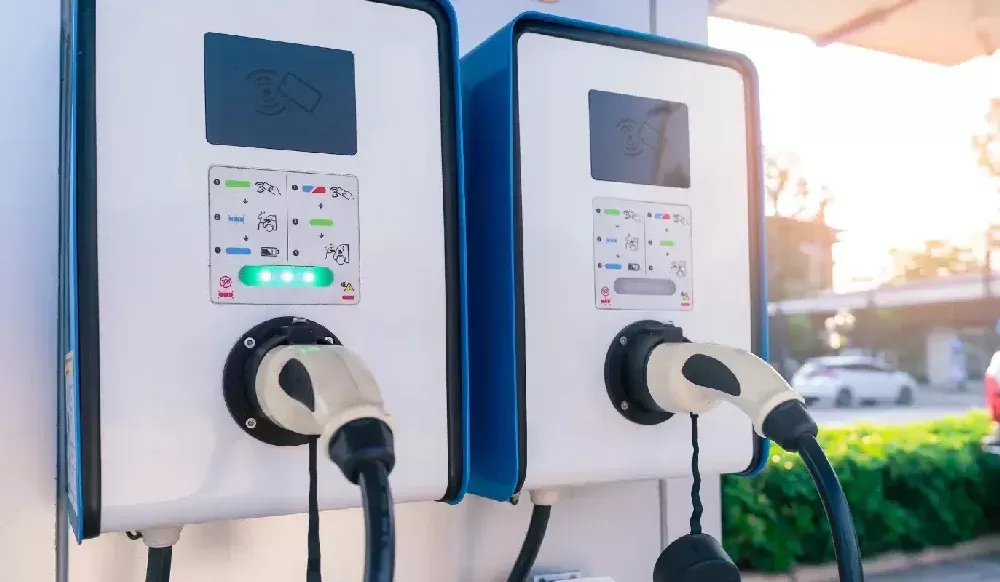Notifications

7 minutes, 23 seconds
-131 Views 0 Comments 0 Likes 0 Reviews

As a trusted EV charger manufacturer in China, Topper Company delivers reliable electric vehicle charging station equipment and comprehensive solutions.
As electric vehicles (EVs) gain popularity, the development of efficient charging infrastructure is becoming increasingly crucial. Traditional electric load balancing systems in centralized charging stations, such as corporate parking lots or large parking areas, may no longer suffice to handle the growing demands of EV charging. To address issues like traffic congestion and uneven power distribution during the charging process, dynamic load balancing EV chargers have emerged. These chargers not only enhance charging efficiency but also stabilize the power grid's operation.
Dynamic load balancing is an intelligent and adaptive system that adjusts the power drawn by an appliance in real-time to ensure optimal performance. This system helps the device use available power efficiently, without exceeding limits or disrupting the grid.
For EV chargers, dynamic load balancing monitors the total power consumption in your household or charging station and adjusts the charging power accordingly. If high-power devices like washing machines or air conditioners are in use, the EV charger reduces its power draw to avoid overloading the circuit. Conversely, when fewer devices are running, the charger can increase its power consumption to speed up the EV's charging.
In contrast, static load balancing involves setting a fixed limit on the power consumption of the charger. For example, an 11kW charger might have a maximum consumption limit of 8kW, ensuring that it doesn't exceed the capacity of the electrical system. This approach maintains safe energy use but lacks the flexibility of adjusting in real time.
The choice between dynamic and static load balancing depends on your charging environment. Dynamic load balancing is ideal for commercial EV stations, public charging hubs, or large fleets where multiple vehicles may need charging simultaneously. It helps manage fluctuating power demands throughout the day, ensuring energy is distributed intelligently, preventing system overload, and optimizing charging speeds.
On the other hand, static load balancing is better suited for home or small business settings with more predictable power usage. It offers a simple and cost-effective solution for users who don't need advanced adaptability. Static load balancing ensures safe operation without the need for real-time adjustments.
Dynamic load balancing chargers optimize power distribution by adjusting charging current and output in real-time. The system ensures fast charging speeds while protecting the grid from potential overloads.
The setup includes two key components:
The Charger: This device connects to an electrical outlet and transfers power into the EV. It can adjust its power output based on the vehicle's needs, typically ranging from 3.7 kW to 90 kW.
The Control Unit: This is an intelligent system responsible for monitoring grid power loads in real-time. It adjusts the charger’s power output based on grid load changes, maintaining the balance of the power grid. The control unit also communicates with other chargers and grid management systems for more advanced load management.
When multiple EVs are charging at the same station, congestion can occur. Dynamic load balancing helps by distributing the charging tasks across multiple chargers, improving the overall experience and reducing wait times.
High-power EVs need higher charging output to charge faster. Dynamic load balancing ensures that high-power chargers are allocated to these vehicles, optimizing efficiency and reducing the time spent charging.
Under heavy load conditions, the power grid is vulnerable to overloads. Dynamic load balancing adjusts charging power in real-time, preventing drastic fluctuations and reducing the risk of grid instability. This ensures the long-term reliability of the power grid.
Real-Time Load Monitoring: The control unit constantly tracks the grid load, capturing any changes and making quick adjustments to prevent overloads.
Power Output Adjustment: The system can dynamically adjust charging power, ensuring chargers don't cause excessive strain on the grid.
Energy Saving Control: Dynamic load balancing minimizes energy waste by adjusting charging power during peak loads, helping to reduce overall grid demand.
In real-world scenarios, dynamic load balancing chargers collect real-time grid load data and automatically adjust charging power accordingly. For instance, in a large commercial parking lot, multiple EVs charging simultaneously can increase the grid’s load. Dynamic load balancing chargers intelligently distribute charging tasks to avoid overloading the grid and maintain smooth operations.
As EVs become more prevalent, the future of charging infrastructure will increasingly depend on dynamic load balancing technology. This approach enhances charging efficiency while protecting the grid’s stability. With continuous improvements, dynamic load balancing chargers will play a pivotal role in supporting the growing demand for electric vehicle charging, contributing to the sustainable development of the power grid.
Dynamic load balancing chargers are a crucial component of modern EV charging infrastructure. Through intelligent power management and real-time adjustments, they not only optimize the charging process but also help maintain grid stability. As technology evolves, these chargers will become an integral part of the future charging network, enhancing the EV charging experience while ensuring the power grid remains secure and efficient.Know more about Google SEO Directory
China EV Chargers EV Charger Manufacturer EV Charging Solutions

